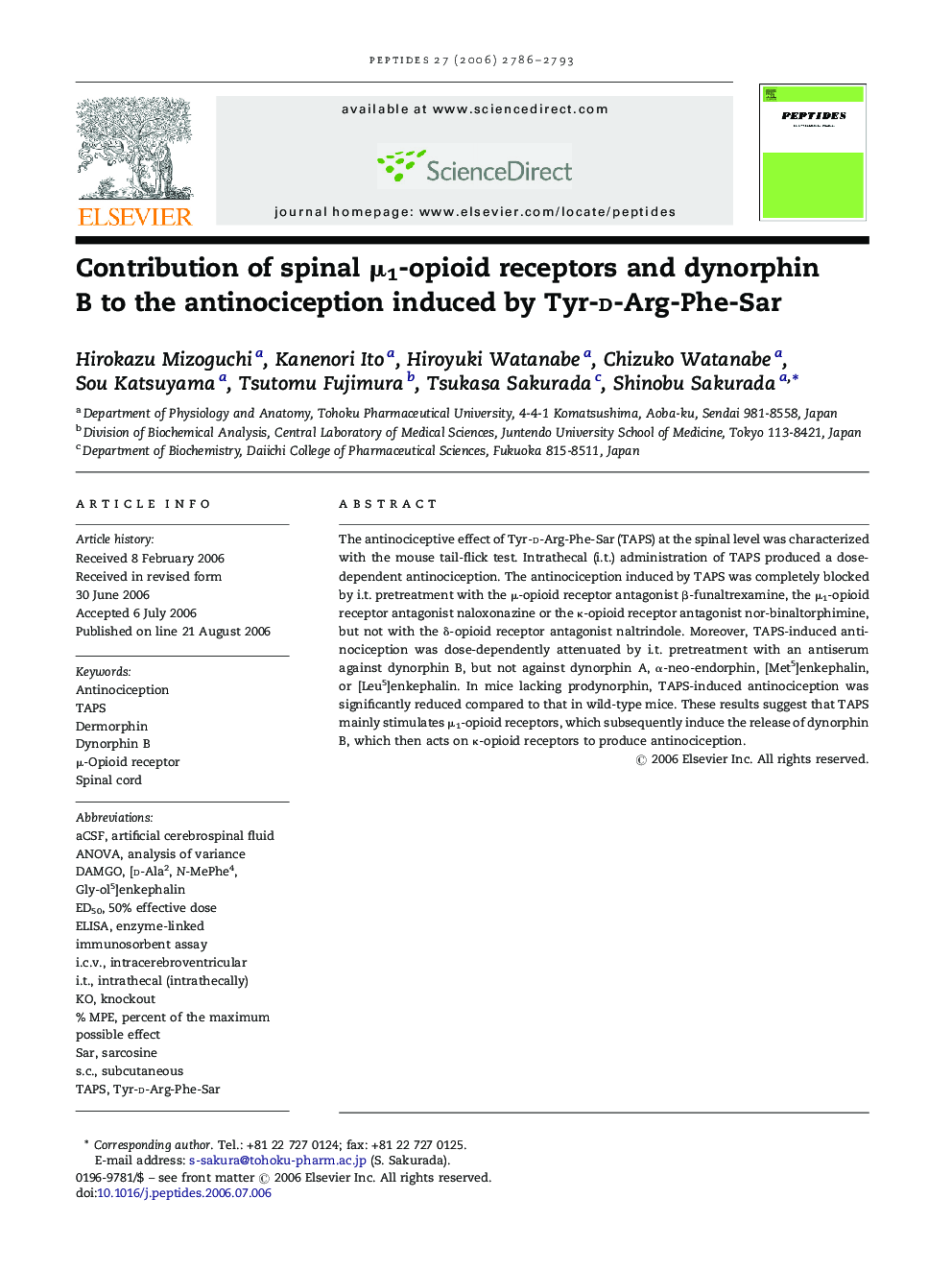| Article ID | Journal | Published Year | Pages | File Type |
|---|---|---|---|---|
| 2007835 | Peptides | 2006 | 8 Pages |
The antinociceptive effect of Tyr-d-Arg-Phe-Sar (TAPS) at the spinal level was characterized with the mouse tail-flick test. Intrathecal (i.t.) administration of TAPS produced a dose-dependent antinociception. The antinociception induced by TAPS was completely blocked by i.t. pretreatment with the μ-opioid receptor antagonist β-funaltrexamine, the μ1-opioid receptor antagonist naloxonazine or the κ-opioid receptor antagonist nor-binaltorphimine, but not with the δ-opioid receptor antagonist naltrindole. Moreover, TAPS-induced antinociception was dose-dependently attenuated by i.t. pretreatment with an antiserum against dynorphin B, but not against dynorphin A, α-neo-endorphin, [Met5]enkephalin, or [Leu5]enkephalin. In mice lacking prodynorphin, TAPS-induced antinociception was significantly reduced compared to that in wild-type mice. These results suggest that TAPS mainly stimulates μ1-opioid receptors, which subsequently induce the release of dynorphin B, which then acts on κ-opioid receptors to produce antinociception.
